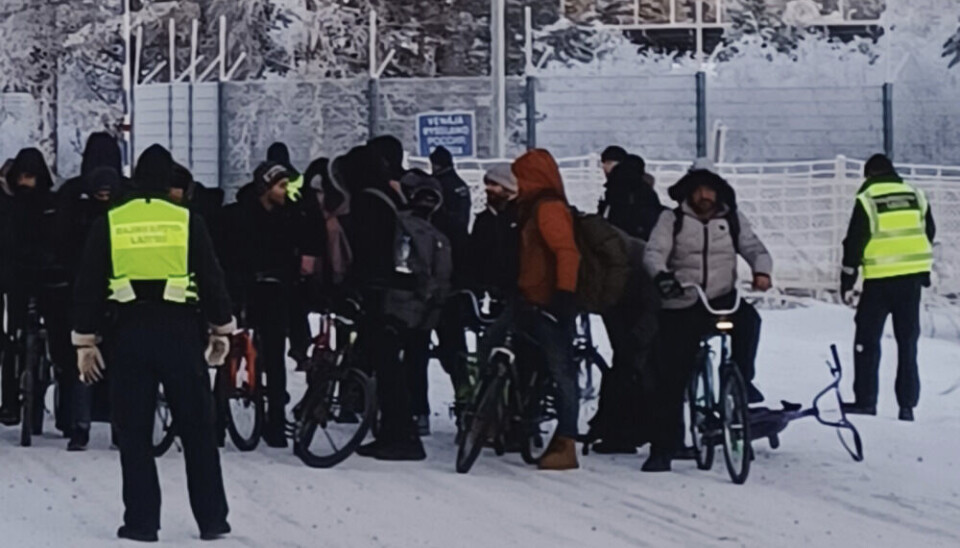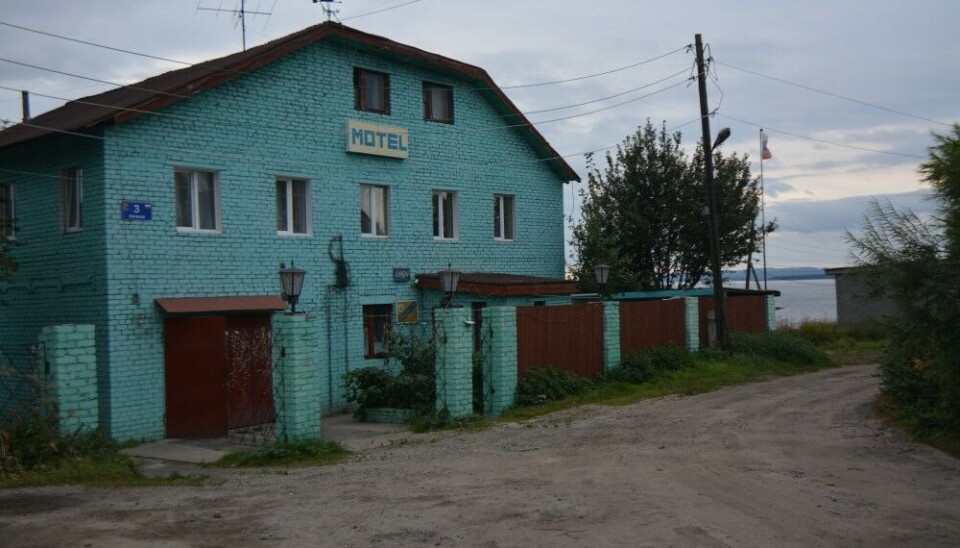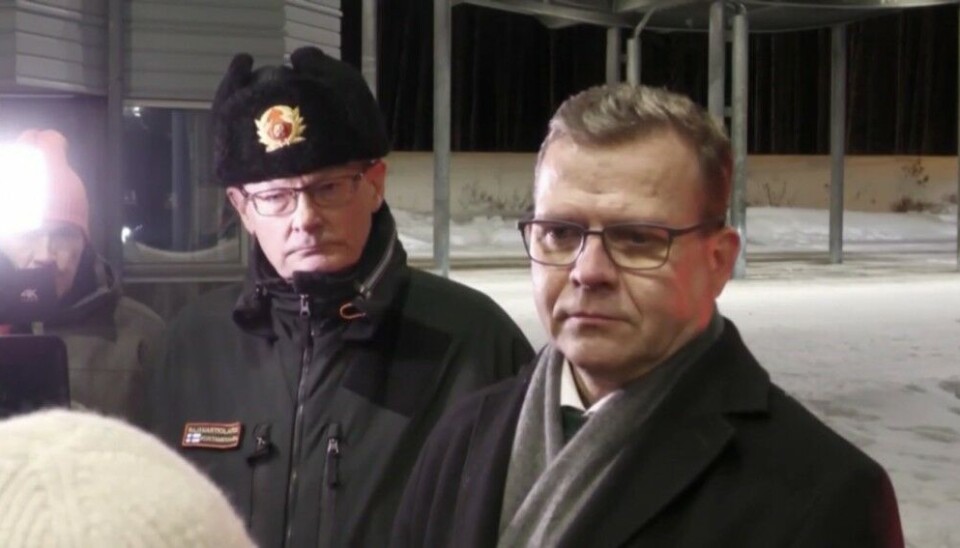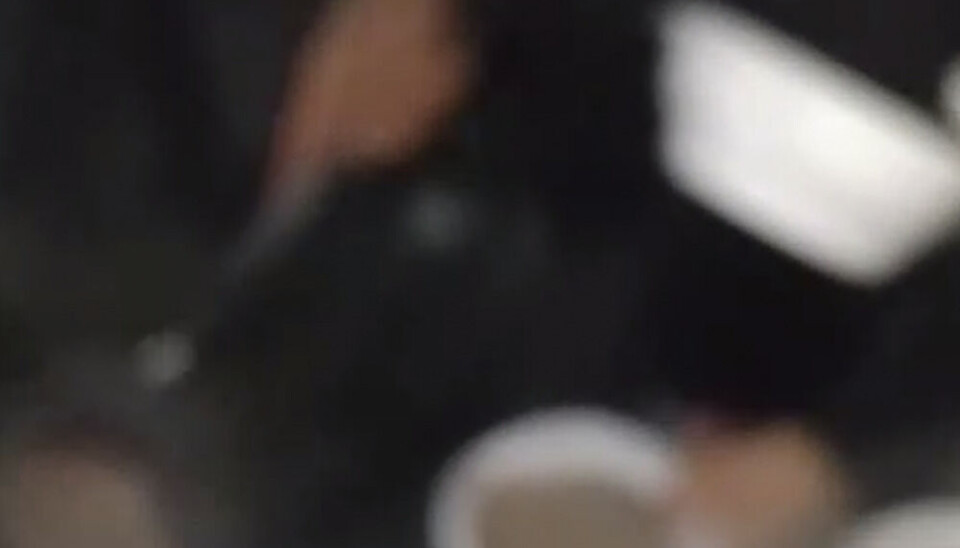
FSB arranges transport to the border, motel in Kandalaksha claims
"Our services came and picked them up,” a receptionist with the motel in Kandalaksha said when called by the Barents Observer on Tuesday. A few hours later, 41 migrants crossed the border to Finish Lapland at Salla checkpoint.
The motel, Na Rechnoi [On the River], is the same that during the migrant crisis in late 2015, and early 2016 became a hub for people heading to Finland from the Kola Peninsula.
Asked by the Barents Observer in a phone interview, the receptionist confirmed that a group of migrants had spent the night at the motel, and said “… our services picked them up this morning.”
Which services do you mean, the Barents Observer asked, but then the receptionist hung up the phone.
The largest hotel in town, the Belomorje, said in a phone conversation they would not provide any information about its guests.

Helsinki Sanomat called another hotel in Kandalaksha and got confirmation that it is the FSB that organized transport from the town and about 170 kilometers to the border. The migrants are given bicycles for the last few meters to Finland as it is not allowed to walk across the frontier.
Just before noon on Tuesday, the first group crossed the border at Salla. Among them were women and children. There is currently a freezing cold -18°C and the Finnish Border Guards have put up heated tents where identity checks take place. All asked for asylum. An hour later, another group of about 20 people came on bicycles in the snow, regional newspaper Lapin Kansa reports.
This is the second day in a row that migrants from the Middle East and North Africa have made it to Arctic Finland following the government’s decision last week to close four checkpoints along the southern Finnish-Russian border. So far in November, more than 500 migrants have been directed by Russia to the Finnish border.
When opening hours came to an end on Tuesday, a total of 41 migrants had entered Finland at Salla, according to a statement by the Border Guard. The persons are from Kenya, Pakistan, Morocco, Somalia, Yemen, Afghanistan and Syria.
PM came north
Prime Minister Petteri Orpo on Monday visited the Vartius checkpoint east of Oulu.
“Our task is to ensure that the Border Guard and other authorities have all the tools at their disposal to calm the situation and protect Finland’s border and border security,” Orpo said.

Orpo said there are indications of an organized Russian effort to push the migrants to Finland.
“We will not accept this,” he told YLE. “If necessary, we will take further action.”
Hybrid operations
After Belarus in 2021 sent thousands of migrants to the border with Lithuania and Poland, the Finnish Parliament in 2022 changed the laws allowing Finland to close checkpoints during exceptional circumstances, such as hybrid operations.
Karen-Anna Eggen, a Ph.D. fellow at the Norwegian Institute of Defence Studies, is an expert on Russian information confrontation and information operations in the Nordic region.

“Russia has increased its pressure on Finland for a while already, using various coercive tools. Forced migration is one such tool that can serve various Russian objectives, including creating uncertainty and unrest and forcing Finland to close its borders,” Eggen says to the Barents Observer.
“It is hard to say exactly what they will gain from it, but diluting and shaming the EU Schengen agreement and nurturing a hostile image of Finland domestically are both plausible explanations,” she says.
The Institute for the Study of War (ISW) writes in an update that Moscow is employing known hybrid warfare tactics and what now happens resembles the crashes on the border to Poland two years ago.
“Russia’s apparent hybrid warfare tactic on the Russian-Finnish border is similar to Russia’s and Belarus’ creation of a migrant crisis on the Polish border in 2021 and is likely similarly aimed at destabilizing NATO,” ISW writes.
Meanwhile, the Finnish Defense Forces writes on Twitter (X) that they are supporting the Border Guard with construction of barriers, and extra fences, to ensure safety around the checkpoint at Varitus.
The checkpoint was closed for normal traffic two periods earlier on Tuesday.
Denies FSB involvement
The Kremlin’s spokesperson Dmitry Peskov has denied Finland’s accusations about Russia’s involvement.
The Barents Observer follows a Telegram channel where people in Arabic in recent days share information about how to travel from Russia to Finland. On Tuesday, several of the persons in the chat made clear that FSB or other law enforcement in Russia do not assist migrants in getting to the border.
We asked one of them in a private chat if FSB has a helping role.
“People fix this themselves. The police have nothing to do with it,” he replied.

“They are alone in the cold, dangerous climate, they go to Finland, don’t have valid passport or visa, they are arrested, put in jail and deported. Russia has nothing to do with this, the person said.
Another Telegram channel, also in Arabic and branded with a Finnish flag, shortly after the closure of the border showed a video recording from what is said to be a tent with migrants in the cold. A few tens of people inside the tent are served warm porridge.
According to the chat, there are some 100 migrants waiting on the Russian side of the border.
It is, however, not clear if the recording is made near Salla or Vartius.
Quiet at Storskog
Finland’s Raja-Jooseppi checkpoint east of Ivalo reports no migrants so far.
Further north, Norway has Schengen-Europe’s northernmost border with Russia.
“We are monitoring very closely what happens in Finland and what measures are implemented there,” Chief of Staff with the Police in Finnmark, Tarjei Sirma-Tellefsen told the Barents Observer.
In 2015, some 5,500 migrants entered Norway via Storskog.

















